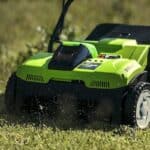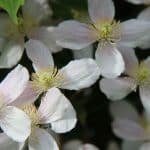Our site is reader supported, this means we may earn a small commission from Amazon and other affiliates when you buy through links on our site.
As a passionate and professional gardener working in my family’s nursery growing shrubs, one plant that nearly everyone falls in love with is dwarf Buddleias. They are much smaller and compact at around 2-3ft, and their smaller flowers make a stunning display of colour. Dwarf buddleias, or ‘butterfly bushes, also attract butterflies and other beneficial pollinators to your garden and are easy to care for with a little pruning and a little love.
What I really like about these dwarf buddleias and why I’ve recommended them is that they fit perfectly into smaller spaces, making them an ideal choice for pots and containers and even hanging baskets. They are also much less invasive and don’t take over your garden like some of the larger alternatives.
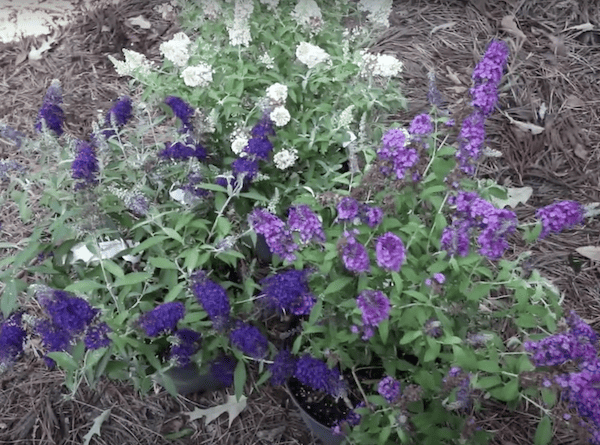
Dwarf Buddleia Overview
- Growing Conditions: Dwarf Buddleia, including the ‘Buddleia Buzz’ varieties, prefers well-drained soil enriched with organic matter. They will grow in various soil types but thrive best in loamy soils. These dwarf varieties are drought-tolerant once established, though regular watering during dry spells promotes healthier flowers and foliage.
- Position and Aspect: They prefer a sunny position, ideally, at least six hours of direct sunlight to produce masses of flowers and maintain compact growth. Their size and sun-loving nature make them perfect for small gardens and containers.
- Eventual Size: Dwarf Buddleias are bred for compact growth, typically reaching a height and spread of around 60-90 cm (2-3 feet). Their manageable size makes them suitable for gardeners with limited space or those who desire a lower maintenance version of traditional Buddleia.
- Pruning: Prune in early spring, cutting back the previous year’s growth to a set of strong buds to encourage bushy growth and more flowers. Deadheading spent flowers will extend the flowering period into early autumn.
- Care: Feed with a general-purpose garden fertilizer in spring to support new growth and flowering.
My Favourite Varieties
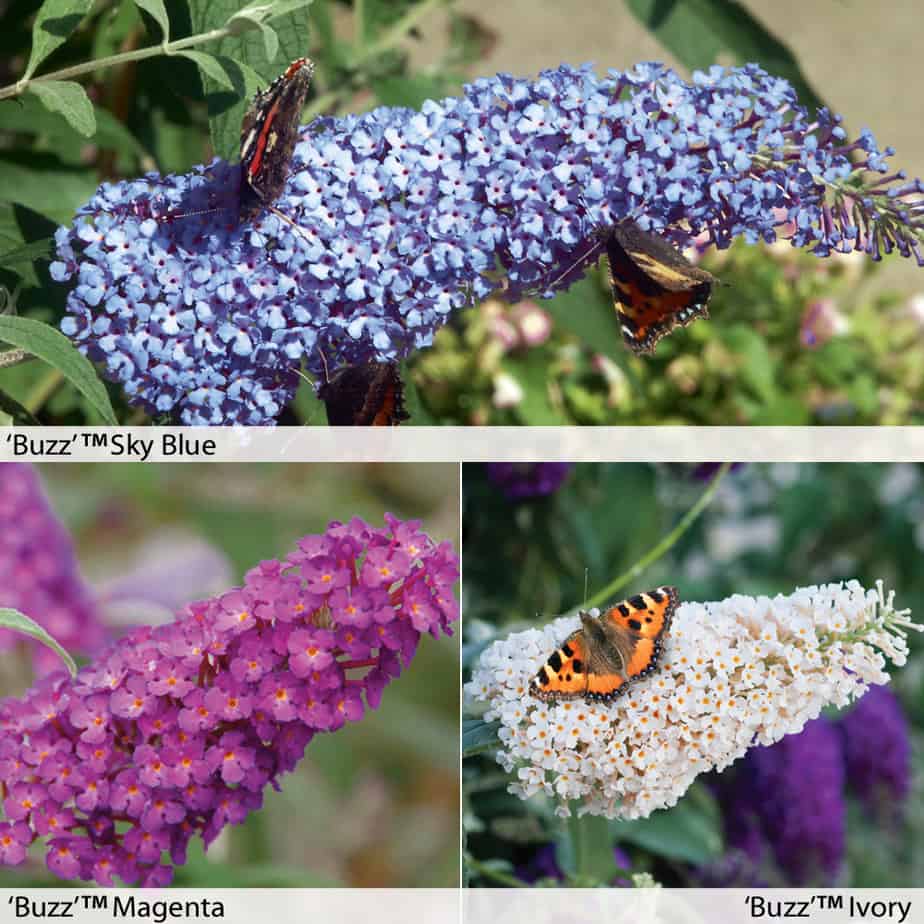
Buddleia Buzz
The Buddleia Buzz collection by Thompson & Morgan has been carefully cultivated. There are five different varieties of this dwarf patio Buddleia, and they have been specially cultivated with smaller gardens and patio pots in mind. The sweetly scented flowers are approximately 15cm (6 inches) long and the same size as full-size Buddleia flowers. However, they only grow to an eventual height and spread of 3ft (90cm), making them perfect for pots and containers.
The Buddleia Buzz collection includes the following varieties:
- Buddleja ‘Buzz® Magenta’
- Buddleja ‘Buzz® Ivory’
- Buddleja ‘Buzz™ Sky Blue’
- Buddleja Buzz™ Indigo’
- Buddleja ‘Buzz™ Candy Pink’ This is the latest edition and was introduced in 2015
Recommended Specialist Nurseries:
Dwarf Patio Buddleia ‘Blue Chip’, ‘White Chip’ and ‘Red Chip’
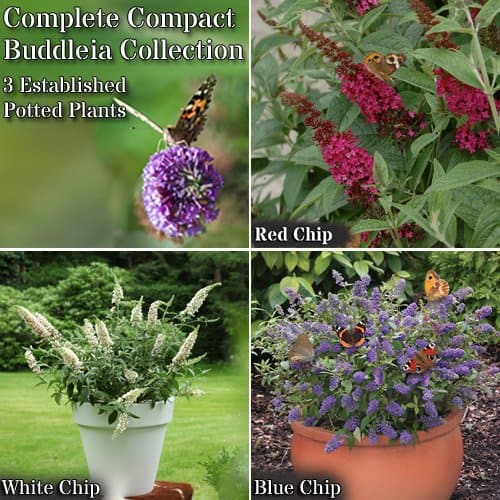
These compact and small Buddleia cultivars are another dwarf Buddleja shrub that is perfect for patio pots. Like other Buddleia, they are very attractive to a variety of beautiful butterflies, our much-loved bees and other beneficial insects that pollinate our plants and are important to pollinating crops. These Buddleias only grow to around 2ft (60cm) tall and make excellent compact plants for patio pots.
Buddleja Flutterby Petite Snow White

Buddleja Flutterby Petite Snow White is a dwarf butterfly bush that brings the elegance of snow-white blooms into even the smallest of garden spaces. It grows to a modest 2 to 3 feet in both height and spread, making it ideal for patio containers, borders or even as a delightful, low hedge.
It thrives in full sun in well-drained soil, and once established, it has very drought tolerance. Water it regularly during its first growing season and feed it with a balanced, slow-release fertilizer in early spring.
Prune in late winter or early spring to encourage bushier growth and provide masses of flowers.
How to grow dwarf buddleias
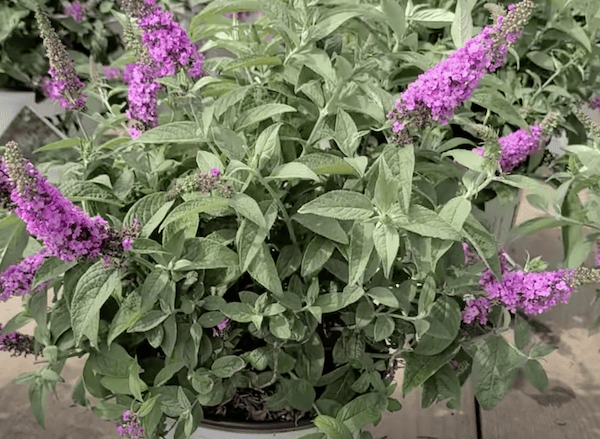
Planting
If you’re planting in the ground, choose a sunny position where the plant can get plenty of sun, ideally at least six hours. Prepare the soil by loosening it and mixing in some good-quality compost to ensure good drainage to give it the best start. Make sure to plant the buddleia at the same depth it was in its pot. If planting several, space them about 2 to 3ft (60-90cm) apart to give them room to thrive.
If growing in a pot or container, select one with drainage holes or make some and fill it with a good quality potting compost. Plant the buddleia at the same depth it was in its original pot. Whether planted in the ground or a pot, water well after planting and water regularly, especially during the first growing season. A layer of mulch can help retain soil moisture and reduce weeds.
Pruning
Dwarf Buddleia require pruning every spring to keep them compact and to promote more flowers. Buddleia’s flower on the new current year’s growth, so pruning will encourage lots of new growth, and encourage plenty of scented flowers over the summer.
Prune when the worst of the frost is over, which is usually around March/April, and the new growth is starting to show. For the first couple of years after planting, prune down to a strong framework approximately 20-30cm tall, removing any diseased, damaged or weak stems. After the first couple of years, prune back to around two buds on the previous year’s growth.
Feeding
We recommend you feed your Buddleia after pruning in spring with a high in potash (potassium) feed such as Vitax Q4 or a good quality rose feed as this helps to promote more flowers.
Feed them again as you water them over the summer with tomato feed, as they will need regular watering if grown in containers. Tomato food often makes an excellent cheap feed because it is high in potash and good for encouraging more flowers.
Aftercare
To encourage repeat flowering, it is a good idea to deadhead (remove) fading flowers. This will promote more flowers throughout the summer. Once the final set of flowers has finished in autumn, it is a good idea to leave these on because the seeds will provide food for small birds over winter.
Repotting
If our buddleia becomes root bound when growing in a pot, it may need to be repotted. Choose a new pot that is slightly larger than the original pot with good drainage. Carefully remove the plant and gently loosen the roots. Add a little compost to the bottom of the pot and position it in the new pot at its original depth. Backfill with quality potting compost, press lightly to remove air gaps, and water well.
Propagating
The best way to propagate Buddleia and get a few extra plants is by taking cuttings in spring.
FAQ’S
How tall do dwarf buddleia grow?
Dwarf buddleia typically grows to a height of about 2 to 3 feet (60 to 90 cm). This compact size makes them ideal for small gardens, containers, and spaces where the larger varieties of buddleia, which can reach up to 6 feet or more, would be too big.
Do you cut back dwarf buddleia?
Yes, you should cut back dwarf buddleia, also known as butterfly bush, to maintain its shape and encourage more prolific blooming. Dwarf buddleia varieties are smaller than their larger counterparts, but they still benefit greatly from annual pruning.
Are dwarf buddleia invasive?
Dwarf buddleia, or butterfly bush, varieties are generally considered less invasive than their full-sized counterparts. The traditional buddleia species can be quite aggressive, self-seeding, and spreading rapidly.
However, dwarf varieties of buddleia have been specifically bred to be more compact and less likely to spread. Many of these varieties produce fewer seeds, and some are even sterile, meaning they won’t self-seed and spread beyond their planting area. This makes them a more garden-friendly option for those who want to enjoy the beauty and pollinator benefits of buddleia without the risk of it taking over their garden.
Have you considered a weeping buddleia?
Buddleia alternifolia is a weeping variety of Buddleia. Although not a dwarf buddleia, it makes a fantastic bush if you have the room and produces clusters of sweetly scented purple-lilac flowers along its weeping branches.
Last update on 2024-04-19 / Affiliate links / Images from Amazon Product Advertising API






